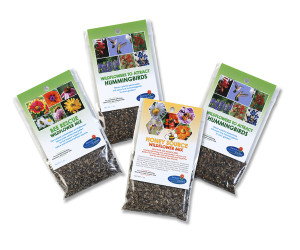Straw in the Garden: Be Careful!
Straw May Be Killing Your Crops
by Sandy Swegel
Straw bales are one of my favorite garden tools. They are useful to the gardener in so many ways. All nicely tied up, straw bales are like giant Lego blocks that can be stacked to make so many things. I’m using the term “straw” bale, but old “hay” bales have the same great features. Three bales make a great compost bin. A row of bales makes excellent walls that double as sitting places. Open the bales up and you have the perfect mulch to keep strawberries or squash off the ground or to make a path protected from mud. Give the chickens one bale and an hour later they have spread it evenly over the coop floor in their pursuit of worms or food in the bale. A square of bales with some plastic thrown over is an excellent cold frame. And I haven’t even begun to touch on the usefulness of bales as a fort.
So it was distressing this week to be reminded that we can no longer just trust the wonderful bales that we scavenged in the past because modern agriculture has rendered hay, straw, and even the gardener’s best friend, manure, unsafe for growing food.
This conversation came up because tomatoes are very sensitive to herbicide damage. The most common cause of herbicide damage extension agents used to see was from “herbicide drift” where chemicals sprayed nearby go airborne and are spread by the wind onto your garden. But my experience this week was with tomato plants, a very susceptible plant – sort of the canary in the mine. After considering dozens of diseases from virus and fungus and bacteria that might be stunting a friend’s tomatoes and keeping them from setting fruit, we had to face the likelihood that the culprit was last year’s straw that was liberally mulched throughout the garden.
Hay and straw become hidden poison bombs in the garden when farmers use the new generation of weed killers (that are very effective on weeds) like Milestone or Forefront or Curtail. Milestone is aminopyralid it is a very persistent killer of broad-leaf plants. Farmers like it because it kills weeds and because unlike other weedkillers, they can feed treated pasture to their animals without any waiting time. The label says clearly that while animals can still feed on the pasture, the herbicide survives being eaten by the animals, and it survives composting. So even year old hay that you’ve composted or nice old manure from free-range animals on pasture still has enough herbicide in it to kill your tomato crop.
The bottom line is you can’t just get straw at the feed store or old hay or manure from a neighbor’s barn to use in your garden unless you know how the original pasture was treated this year and last year. It’s another sad but true example of the destructive environmental impact even small actions such as applying some weedkiller can have. And it’s not even just the farmer who has to take care. Grass clippings are a gardener’s favorite mulch…and some of the new weed killers or weed and feed products contain these long-lasting poison time bombs. It’s easy to want to kill some thistle…but you have to read the very tiny small print to see if you are destroying your own garden by using the organic practices of mulching with grass or hay or straw that generations of gardeners have sworn by. It’s not your father’s straw bale anymore.
http://www.ces.ncsu.edu/fletcher/programs/ncorganic/special-pubs/herbicide_carryover.pdf
http://www.motherearthnews.com/Grow-It/Milestone-Herbicide-Contamination-Creates-Dangerous-Toxic-Compost.aspx


